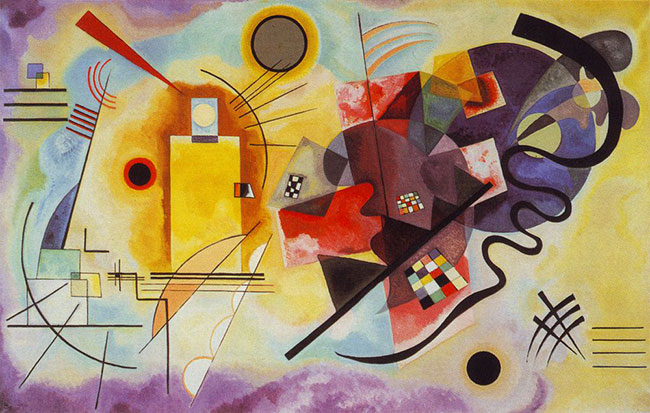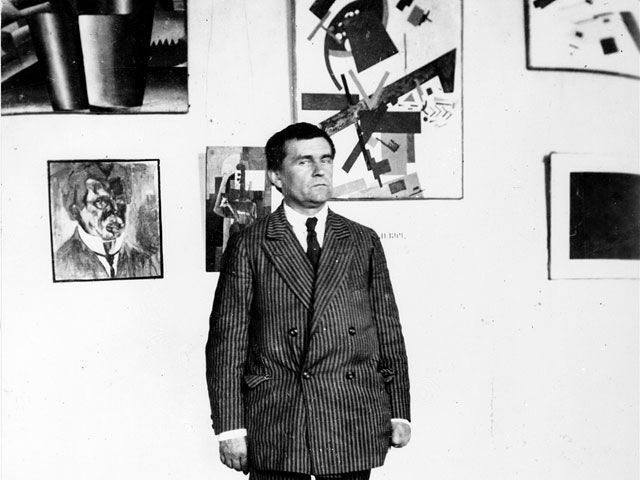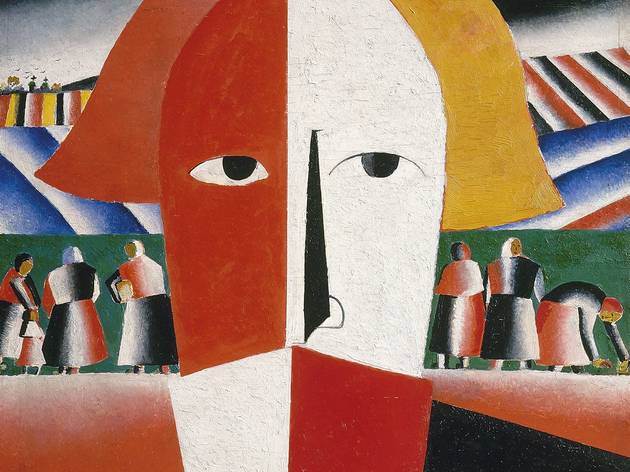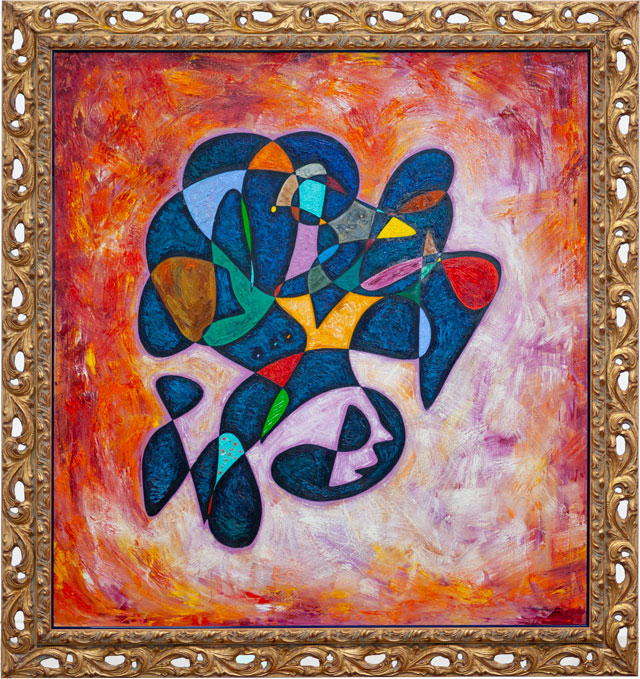- The World Famous Abstract Artists
- Famous Artist from the past & Famous Abstract Paintings

- 12 June '18


by Alina Livneva
12 June '18The World Famous Abstract Artists
The most popular styles are abstract art reflecting on the social content and the abstract nature of social existence. In the world of late modernity, depending on the artists, abstract art became very diverse. Modern art is the work produced from the 1860s to the 1970s. It denotes the styles and philosophy of the art produced during that era. The term is associated with art that bucked away from traditions of the past. Below are the most famous abstract artists and their work:
Famous Abstract Artists Hilma af Klint

The prestigious list shall start with Hilma Af Klint (1862-1944), Swedish artist, is considered to be the founder of Abstract painting. Hilma Af Klint and four other young female artists organized the group “Five.” The mission of the group was to research spiritual aspects of culture and develop the practice of automatic drawing – the technique, which later became associated with Andre Breton and Surrealists.

Famous Abstract Artists Wassily Kandinsky

Born on December 4, 1866, in Moscow, Russia. Died on December 13, 1944, in Neuilly-sur-Seine, France. He was not just a painter, but a mystic, theosophist, and art theorist. His views on art were expressed in his “Concerning the Spiritual in Art” book. He believed spiritual and transcendent content is a crucial part of the painting. The content can be expressed most accurately by the direct psychophysical influence of pure color accords and visual rhythms. His “impressions,” “improvisations” and “compositions,” as Kandinsky used to title his series of works, were based on the highly stylized allusion of mountainous scenery, which seems to vanish in clouds.

Famous Suprematism Kazimir Malevich

Born on February 23, 1879, and died on May 15, 1935. Malevich was a Ukranian avant-garde artist and theorist whose pioneering work and writing had a profound influence on the development of non-objective or abstract, in the 20th century. Born in Kyiv, he invented the concept of Suprematism and sought to develop a form of expression that moved as far as possible from the world of natural forms. It moved away from the subject as well to access the so-called supremacy of pure feeling and spirituality. Malevich is considered to be a pioneer of Ukrainian avant-garde.

Famous Modernism Piet Mondrian

Mondrian applied exclusively right angles. Parallel and perpendicular lines created the image. The palette included primary colors (red, yellow, and blue), as well as non-colors, like white, grey, and black. The surface was flat and even, so nothing can disturb the ultimate balance, embodied in the regular grate composition.
Famous Post-Impressionist Vincent van Gogh

The next on the list is Vincent van Gogh, a French artist who is an example of Post-Impressionism. Van Gogh is now among the most popular of the Post-Impressionist painters, although he was not appreciated during his life. He is now famed for the beautiful vitality of his works that are characterized by expressive and emotive use of vibrant color and playful use of impastoed paint. The traumas of his life, recorded in his letters, have tended to dominate and distort modern perceptions of his artwork.
NeoplasticismTheo van Doesburg

The ideas of Neoplasticism has been developed by another painter from the Netherlands – Theo van Doesburg (1883-1931). He formulated the theoretical bases of Neoplasticism in the articles published in “De Stijl” magazine.

Famous Artists Paul Klee

Paul Klee (1879-1940) was a Swiss painter and graphic artist, who managed to combine the ideas of lyrical and geometric abstraction. Paul Klee taught together with Kandinsky, working on his visual theory, according to which the morphogenesis in nature is rooted in the same rules - the rules of harmony.

Orphism Robert Delaunay

Robert Delaunay (1885-1941), a prominent French master, was inspired by the theory of Simultanism, formulated by a chemist Michel Eugène Chevreul. The theory explained the peculiarities of our color perception with the influence of the surrounding hues.
Nonfigurative Artists Frantisek Kupka

One of the followers of Orphism was Frantisek Kupka (1871-1957) – the Czech painter. He moved to Paris in 1894, where he received artistic training. Being interested in theosophy, he also was well-acquainted with the variety of scientific theories of light and color. They prompted Frantisek Kupka to shift from symbolism and Neo-Impressionism to nonfigurative compositions.
Famous Abstract Artists Arshile Gorky

Arshile Gorky was born in the village of Khorgom (today's Dilkaya), situated on the shores of Lake Van in the Ottoman Empire. In 1915, Arshile Gorky fled Lake Van during the Armenian Genocide and escaped with his mother into Russian-controlled territory.

Cubism Pablo Picasso

Pablo Picasso, a Spanish artist from the 20th Century, started his career painting representational pieces. Around 1910, he developed Cubism, which is the drawing of planes and angles that vaguely looked like the people he was drawing, but looked more like geometry.

Abstract Expressionism Artists Franz Kline

Franz Kline produced his first canvases in the late 1940s. They were noticeable for the large-scale and amplified contrast of large, bold brushstrokes. Franz Kline limited himself with the minimum of optical instruments to make the viewer’s experience even stronger.
Post-War American Art Mark Rothko

Another prominent representative of the Post-war American art was Mark Rothko (1903-1970). Born Markuss Rotkovičs; similar to Gorky, he was the son of the immigrants from the Russian Empire.

Colour Field Painting Barnett Newman

Among the most significant masters, who defined the development of Colour field painting in the USA, we should mention, is Barnett Newman (1905-1970). Similar to Gorky or Rothko, Barnett Newman ’s way to success was complicated, as the master had to face the public’s unacceptance and misunderstanding of his artistic philosophy. He had his first solo exhibition at the age of 45, and it received harsh criticism.

Abstract Expressionist Jackson Pollock

If Kline, Rothko, Newman tried to demonstrate the self-standing nature of painting as an object, another American master Jackson Pollock (1912-1956) moved the focus from the result to the process. Pollock introduced the new way of rendering a piece: he took canvas from the wall and put it on the floor.
Abstract Expressionism Nicolas de Stael

Now it was Europeans’ turn to respond to the new tendencies brought over the Atlantic. Tachism or Art Informel was the European version of Abstract Expressionism. Several outstanding painters represent it, but probably it is Nicolas de Stael (1914-1955), who is best-known to the broad public. He was the son of Russian immigrants from France.

Nouveau RéalismeYves Klein

Another artist, whose vision emerged under the azure sky of the South of France, was Yves Klein (1928-1962). Born in Nice, he moved to Paris, where the artist founded a small studio. As the legend says, since it was in the basement of the building and had no windows, Yves Klein painted its ceiling in blue color in order not to be overly depressed.
The Painter of Black Pierre Soulages

Born in Rodez, Aveyron, in 1919, Pierre Soulages is also known as "the painter of black." By their meditative atmosphere, abstract compositions of Pierre Soulages (b. 1919) are different and, at the same time, similar to those by Yves Klein.
Surrealist Man Ray

Man Ray was one of the famous Surrealist artists. Surrealism was a movement that included visual arts and writing that developed in the 1920s. The artist career is special above all for the success he had achieved in the United States and Europe.
The Master of Abstract Gheorghe Virtosu

Gheorghe Virtosu is one of the famous contemporary art representatives. He is the master who does not deny reality in his abstract painting. The artist paints under the impulse of revelation-ideas born as sparks impossible to control, which light an entire series of subsequent actions. He admits that changes can occur during the artistic process, especially regarding the dimensions and colors used. However sustains that the spark, as a moment of inspiration, is the one deciding how the work will eventually look.


-
Art Advisory Services


